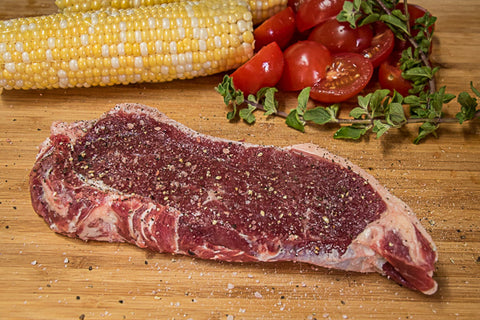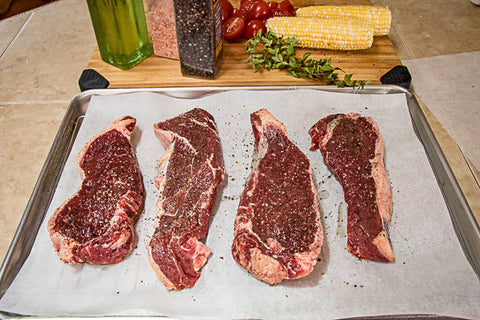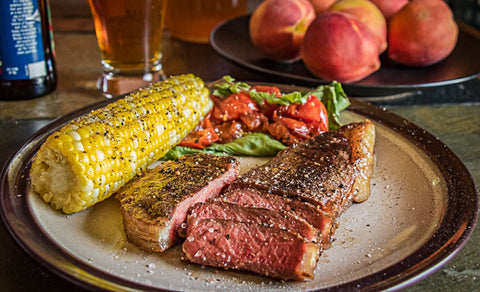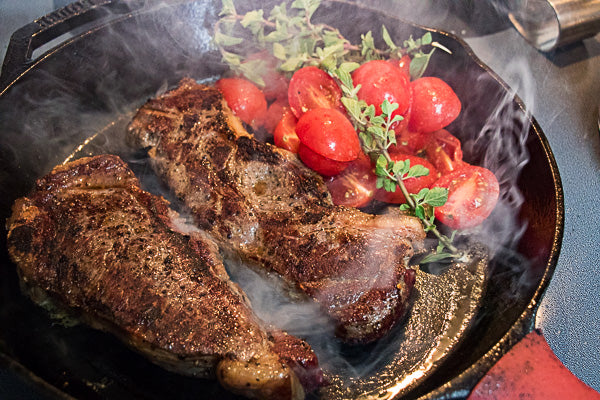Bison steaks are an excellent choice for those who prefer leaner meats with a rich flavor. However, bison can be challenging to cook since it is a lean meat that tends to dry out quickly. To ensure that you get the best possible results, we recommend using the reverse sear method. This technique involves cooking the steak slowly at a low temperature and then searing it at high heat to create an irresistible crust.
Here's a detailed step-by-step guide on how to reverse-sear a bison steak:

1. Begin by coating the thawed steak with oil and then seasoning with either sea salt or kosher salt and freshly ground black pepper to taste. This will help enhance the natural flavors of the meat and make it even more enjoyable to eat. Allow the steak to sit at room temperature for 30 minutes before cooking.
2. Preheat your oven to 220°F. This will ensure that the steak cooks evenly and retains moisture throughout the cooking process.

3. Place the seasoned bison steak between parchment paper and place it on a wire rack set inside a baking sheet. This will promote proper air circulation around the steak and allow any excess fat or juices to drain onto the pan below.
4. Place the baking sheet in the preheated oven and cook the steak until it reaches an internal temperature of 125°F for medium-rare. You are highly encouraged to use a meat thermometer to monitor the temperature and ensure the steak is cooked to your desired level of doneness. The cooking time will vary, depending on the thickness of the steak.
5. Once the steak has reached the desired internal temperature, remove it from the oven and let it rest for 10 minutes. This will allow the juices to redistribute throughout the meat and keep it moist and tender.
6. While the steak rests, preheat a cast-iron skillet over high heat. The skillet should be large enough to hold the steak comfortably and allow it to sear evenly. Larger skillets will help retain heat and will sear the steak quicker.
7. Add 1-2 tablespoons of light olive oil to the skillet and let it heat up until it almost starts to smoke. This will ensure the steak gets a perfect sear and develops a beautiful crust.
8. Pat the steaks with paper towels to remove any moisture. Any water will require longer cooking and reduces the sear, causing the steak to have less of a crust.

9. Place the rested bison steak in the skillet and sear it for 60-90 seconds on each side until you get a nice crust. You can use tongs to flip the steak and ensure that it cooks evenly on both sides. You can also use the tongs to hold the steak to sear the edges.
10. Remove the steak from the skillet and let it rest for another 5 minutes before slicing and serving. This will allow the juices to settle and the steak to remain juicy and delicious.

Using the reverse sear method, you'll end up with a restaurant-quality bison steak that's juicy and flavorful. Try this cooking technique and experience the full range of flavors that bison meat has to offer. With the reverse sear method, you'll get a steak that's juicy, tender, and full of flavor. Give it a try and enjoy the delicious taste of bison!
If you like this, consider trying the Sous Vide method. Any serious foodie will love this!
Steak Cooking Temperatures
| Rare | 120ºF to 125ºF | Center is bright red, pinkish toward the exterior portion, and warm throughout. |
| Medium Rare | 120ºF to 125ºF | Center is very pink, slightly brown toward the exterior portion, and slightly hot. |
| Medium | 130ºF to 135ºF | Center is light pink, the outer portion is brown and hot throughout. |
| Medium Well | 150ºF to 155ºF | Please, do not do this with Bison! |
| Well Done | 160ºF and above | Don’t even think about it. |


